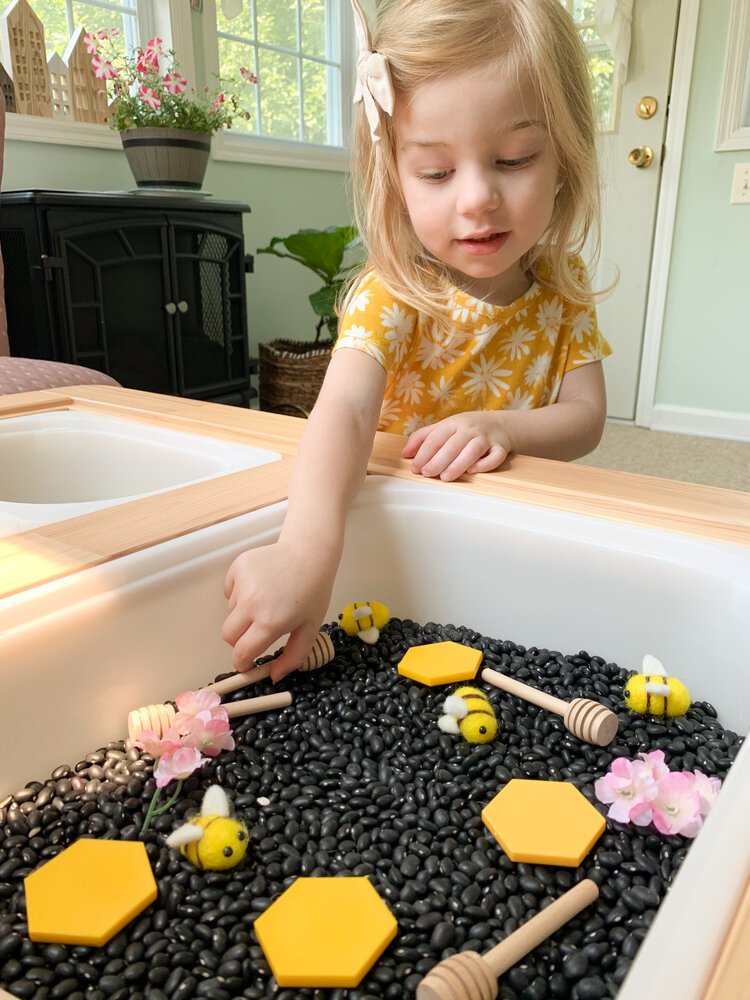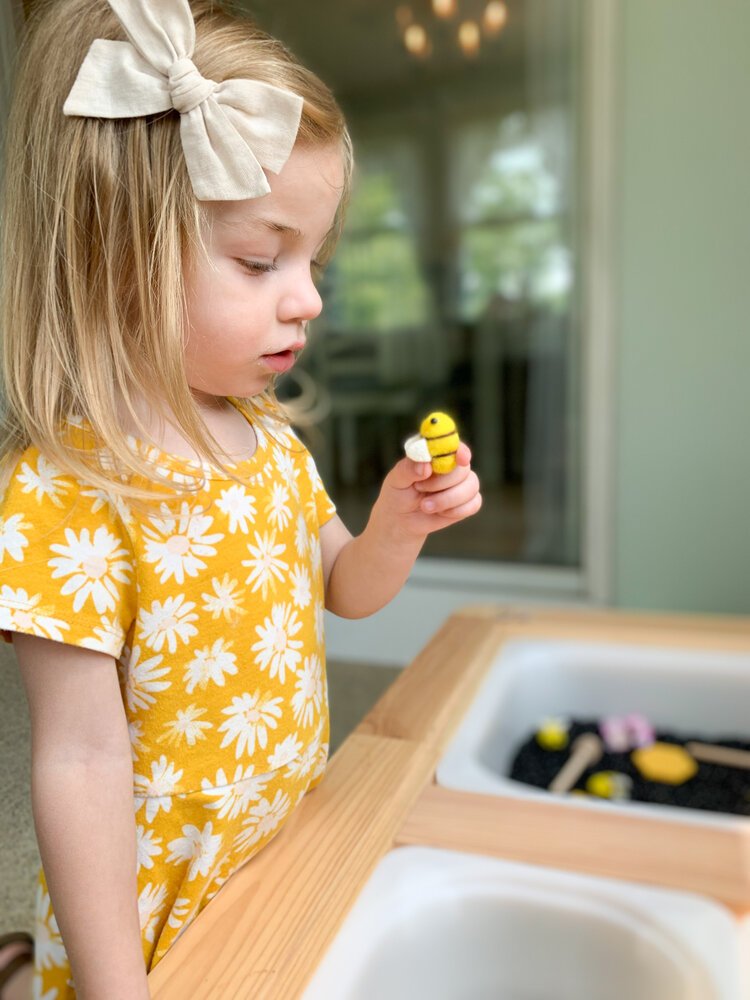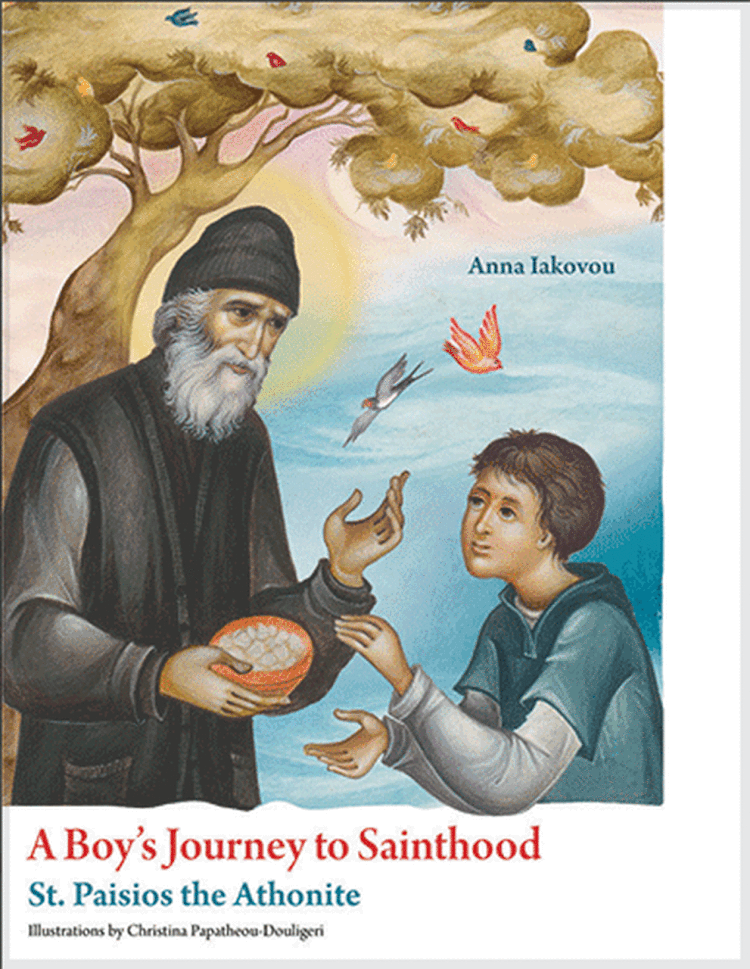Learn about St Paisios
Feast Day Celebrated July 12th
St Paisios is a beloved saint who is loved, cherished and celebrated throughout the world. We would consider him to be a modern-day saint as he was canonized in 2015 by the Holy Synod of the Ecumenical Patriarchate. Even though he lived the monastic life on Mt Athos in northern Greece, he became a shining light for thousands of faithful who flocked to see him. His life, miracles, and teachings continue to touch the hearts of people throughout the world to this day. As I was searching for ideas for my July Saints Liturgical Guide for St Paisios, I discovered that there is very little material out there for kids. He is such a beloved saint, so I wanted to compile some ideas on how to learn more about St Paisios with your kids. There are so many fun ways to engage with his life, including some of his analogies like “be the bee,” or his special friendship with “Olet” the little bird who would visit him, or the story of how he sold wood carvings to feed the town, or even take the opportunity to learn more about monastiscim! I hope you learn something new - right along side your kids- and have fun while you do with these fun and easy activities for kids!
In this guide you’ll find more information about the life of St Paisios, plus I’ve included simple and easy ideas to celebrate his feast day! This guide will include activity suggestions, book recommendations, and additional information for older kids so you can learn more about him and celebrate this great saint!
Scroll to learn more about St Paisios and find activity and reading suggestions to celebrate this feast!
First, let’s learn about the life of Saint Paisios, to better understand the man he was and the legacy he leaves behind:
Life of St Paisios - Saint Paisios is a contemporary saint in the Orthodox Church who lived most of his life as a monk and ascetic on Mount Athos. Saint Paisios was born in July 25, 1924 in the humble village of Farasa in Cappadocia, Asia Minor (modern day Turkey). He was baptized at 3 weeks old by the village priest, St Arsenios the Cappadocian, who foretold his life as a monk. A week following Saint Paisios’ baptism the Turks drove out all of the Greeks from Asia Minor, sending them on a 400-mile exodus to Greece, where his family settled in Epiros. It is interesting to note that it was Elder Paisios who later wrote about the life of St Arsenios. Early in his life, St Paisios gravitated towards the spiritual life, spending hours daily in prayer. During World War II he served in the military as a radio operator. In 1950 he went to Mount Athos, where he remained for most of the rest of his life, growing in spiritual stature through prayer, fasting, and many ascetical practices. In 1979 he moved to his final home, Panagouda Hermitage. Here he received tens of thousands of pilgrims, granting them, by God’s grace, healing, advice, wisdom, and solace. He reposed in the Lord on July 12, 1994 and was canonized a Saint in 2015.
He is one of the most beloved modern saints in the Orthodox world because he was able to speak to us in contemporary language, using simple analogies that communicated deep spiritual wisdom. He prayed continually for the world and used his God-given gifts of discernment and foresight to guide those who would visit him. He never berated people, but always encouraged them, giving hope in place of desperation. “My heart rejoices when I see souls who take heed and struggle in a world that has become full of little devils.”
Source: https://sanfran.goarch.org/news/lessons-from-saint-paisios-the-athonite
Be the Bee and Not the Fly by St Paisios
One of the most well known analogies that St Paisios told is this one : Be the bee. Read this story to your kids, and check out the fun activies to engage more (below):
“Some people tell me that they are scandalized because they see many things wrong in the Church. I tell them that if you ask a fly, “Are there any flowers in this area?” it will say, “I don’t know about flowers, but over there in that heap of rubbish you can find all the filth you want.” And it will go on to list all the unclean things it has been to.
Now, if you ask a honeybee, “Have you seen any unclean things in this area?” it will reply, “Unclean things? No, I have not seen any; the place here is full of the most fragrant flowers.” And it will go on to name all the flowers of the garden or the meadow.
You see, the fly only knows where the unclean things are, while the honeybee knows where the beautiful iris or hyacinth is.
As I have come to understand, some people resemble the honeybee and some resemble the fly. Those who resemble the fly seek to find evil in every circumstance and are preoccupied with it; they see no good anywhere. But those who resemble the honeybee only see the good in everything they see. The stupid person thinks stupidly and takes everything in the wrong way, whereas the person who has good thoughts, no matter what he sees, no matter what you tell him, maintains a positive and good thought.”
+St. Paisios of Mt. Athos, “Good and Evil Thoughts,” Spiritual Counsels III: Spiritual Struggle
St Paisios and Nature
St Paisios was known to have many animal friends. In a letter written to the nuns of the Monastery of St John the Theologian in Souroit, he recounts a beloved bird named Olet who became a friend to him. He tenderly cares for the bird, even feeding him daily. He tells the nuns “When I call for Olet to come, he brings with him other birds, friends of his, who run right to the food, but Olet comes out of obedience and love. Even when he is hungry, he sits a while with me and forgets food; I remind him. And now that the weather has turned beautiful and he finds bugs to eat, when I call he still comes out of obedience, even though he is full and not bothered by hunger.” You can read more about his beloved bird Olet and his many encounters with animals HERE. One characteristic you’ll see over and over again is he had such a tender love for all creation, both nature, animals and people. In the saints we see countless examples of people who walk in simple harmony with all of nature, and as a result animals are drawn to them. It’s just a glimpse into the paradise, like Adam and Eve in the garden, who was in harmony with nature in the beginning.
Activity Suggestions for Kids :
1. Make Bird Feeders
St Paisios had a special connection with nature. In fact he had a bird friend he named Olet, who he would feed and care for. St Paisios cared for nature and animals with such a tender love. We too can follow in his footsteps and care for the animals surrounding us! Consider making a bird feeder and feed the birds just like St Paisios did (See story above).
Here are some ideas for DIY bird feeders:
2. Bee the Bee Sensory Bin (for younger children)
Originally shared on Instagram, my friend @Corinne.ashleyy created a fun sensory bin for her daughter and I’m obsessed! Sensory bins provide children with the opportunity to explore and learn through hands-on tactile play that engages their senses. These bins encourage and support various types of development and are great activities for this feast day. They encourage exploration while incorporating a variety of senses: touch, sight, sounds, taste, and smell for children to learn and explore. This is a perfect activities for kids of all ages to engage with St Paisios’ teaching to Be the Bee, but especially for younger kids (1-4). You can see her original post HERE.
3. Make Soap Carvings
There is an account that St Paisios spent time in Sinai and he carved small wooden things and sold them in order to buy food for the people there. We can remember him by mimicking him! Using a bar of soap, you can make soap carvings! Check out this blog for DIY soap carvings for kids HERE.
4. Go on a nature scavenger hunt!
St Paisios taught us to “be the bee” (see story above), so practice finding the flowers and beauty all around us! Go on a scavenger hunt and look for flowers on your walk. Children are natural good at seeing what’s right in front of them! Check out this free printable flower scavenger hunt guide! Bonus: collect a few flowers to take home with you and press them in some old heavy books for a craft project later!
5. Care for Nature Around You
One example of the life of St Paisios was his care for nature and those around him. One way we can mimick St Paisios is by being mindful of the animals, bugs, and wildlife around us and care for it! Hanging a bird feeder with seeds, hummingbird feeder, planting plants that attract bees (check out this list of bee-friendly plants), and as we do this we can remember the words of our Lord “whatever you did for one of the least of these… you did for me.” (Matthew 25:40)
6. Make a Greek Salad!
St Paisios spent most of his life in Greece, so why not eat make/eat some Greek food as we remember him! If you have the 2021 Orthodox Children’s Calendar by Draw Near Designs , check out the June activity page for a yummy recipe and an illustrated summary of St Paisios’ life! For the recipe in this photo, check out Food Network’s Ina Garten’s recipe HERE.
7. What a video about his life!
Additional Fun Crafts for Younger Kids
8. Create a bee using what you have at home
Check out these cute little bee crafts, and to make is applicable, add the words “Be the Bee” to be reminded of St Paisios’ teaching!
Children’s Book Recommendations:
Elder Paisios the Hagiorite, the Friend of Children by By Catalin Gregore - Beautiful full color illustrations adorn the simple and text. Written for children 7 and up
A Boy’s Journey to Sainthood: Saint Paisios the Athonite by Anna Iakovou - In this book, children will learn about the life of St. Paisios through sweet and moving stories, filled with wisdom and joy. For children ages 5 to 12.
Saint Paisios the Hagiorite by Potamitis Publishing
My Synaxarion July by Potamitis Publishing - features St Paisios on July 12th
The Monk that Grew Prayer - although not directly about St Paisios, this book is great for illustrating the life of a monk. This story is about a monk prays deep in the forest. It appears like he is doing just simple, ordinary tasks, such as chopping wood and and tending to his garden. But as he works he is really growing prayer. The monk prays continually throughout the day and night, and, as the seasons pass, he becomes a holy man. This delightful, beautifully illustrated book teaches children that no matter what they are doing, or what hour of the day it is, they too can pray.
Apolytikion (Tone 1)
The offspring of Farasa, and the adornment of Athos, and the imitator of the former righteous, equal in honor, O Paisios let us honor O faithful, the vessel full of graces, who hastens speedily to those who cry out: glory to Him Who gave you strength, glory to Him Who crowned you, glory to Him Who grants through you healings for all.
Kontakion (Tone 4)
The most-famed ascetic of the Holy Mountain, and the newly-enlightened light of the Church, let us praise him with hymns with all our heart, for he leads the faithful towards a perfect life, filling them with rivers of gifts, therefore we cry out: Hail, O Father Paisios.
Final Thoughts
When it comes to Feast Days, I always prioritize 2 things: (1) Attending the service and (2) telling my children about the saint. Usually this is done by showing them the icon or reading the account from one of the resources above. If I can do those two things, I feel a great sense of success! My hope is that these feasts days imprint on their hearts during their childhood and they have a greater love for our Savior as they grow up because of them. Now, if you are able to do those two things, you’re a gold star! Bravo! If you are in a season where you want to go a little deeper and make those connections stronger, I will cheer you on and encourage you on that venture. Some seasons allow for more, especially as children grow older. But if you find yourself in a busy season with littles, rest assured, you have many many years ahead to be able to add more to your plate!






















